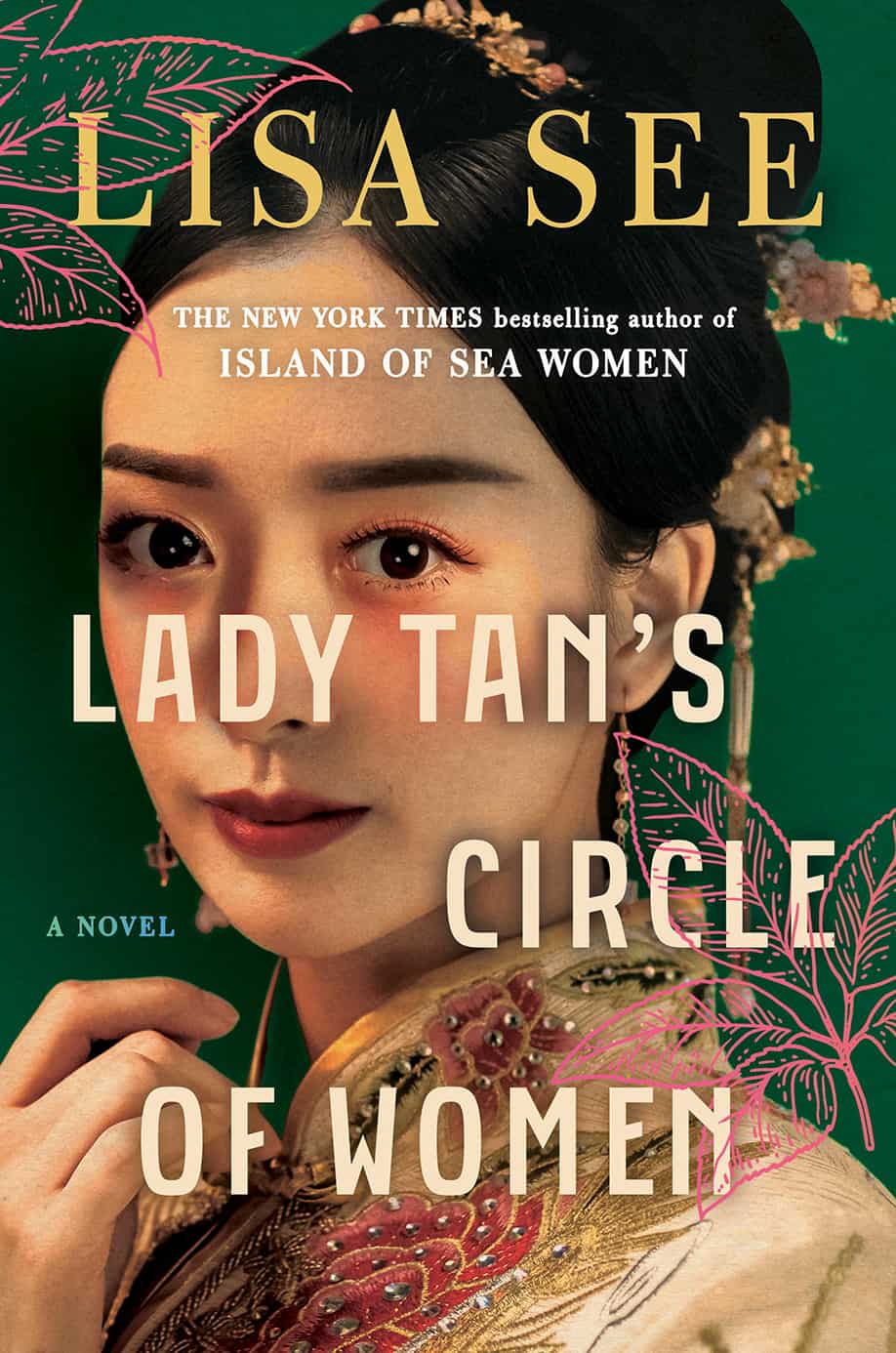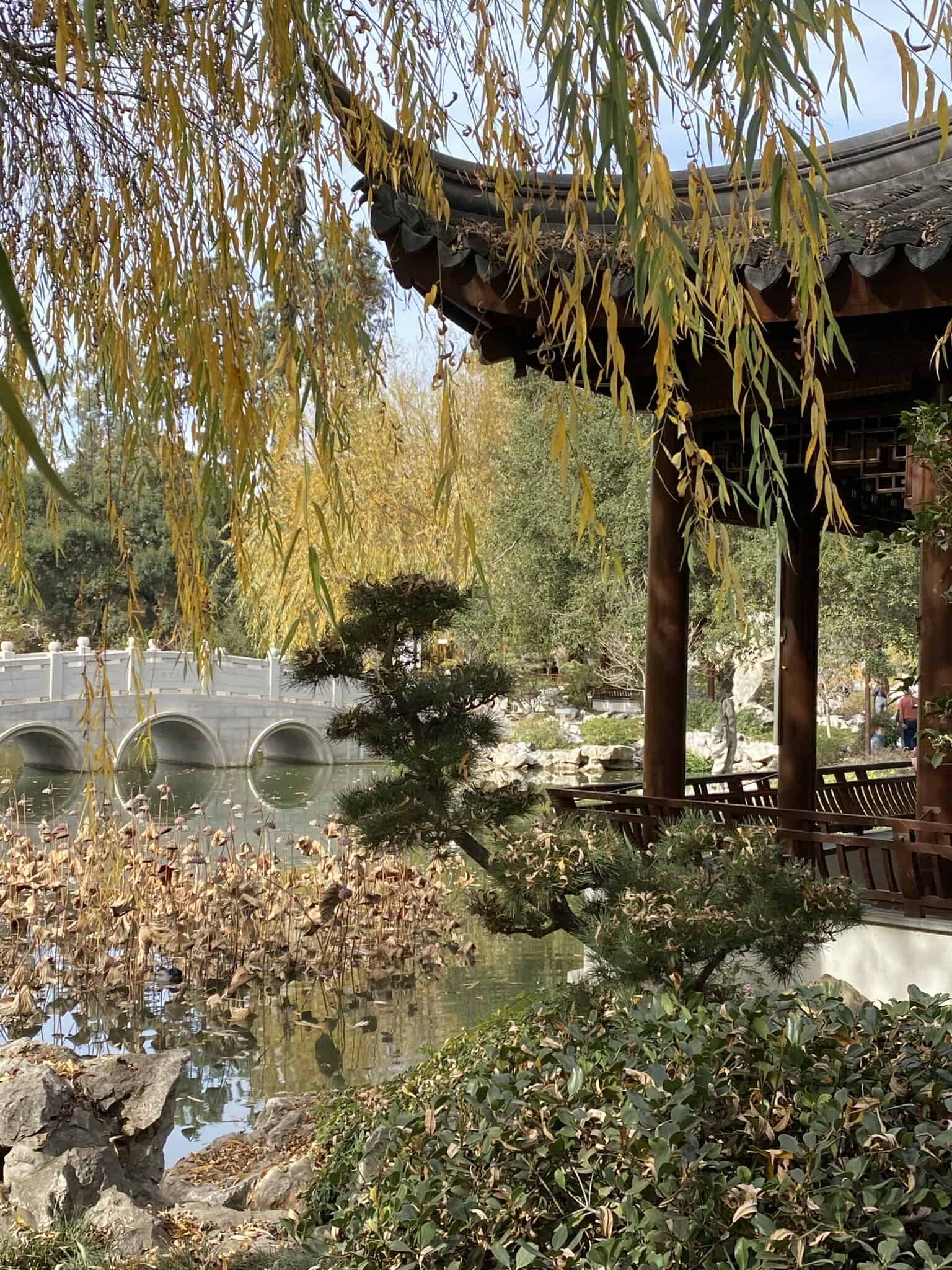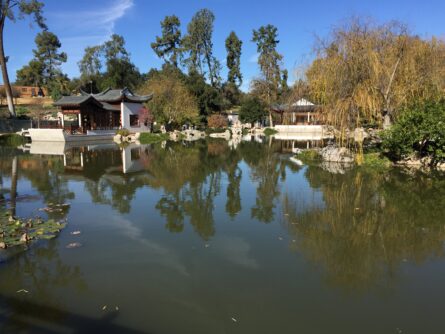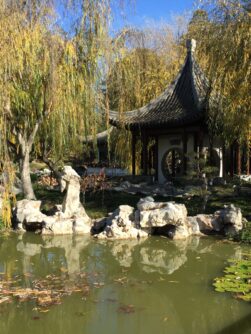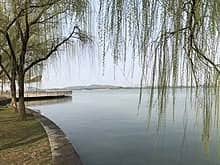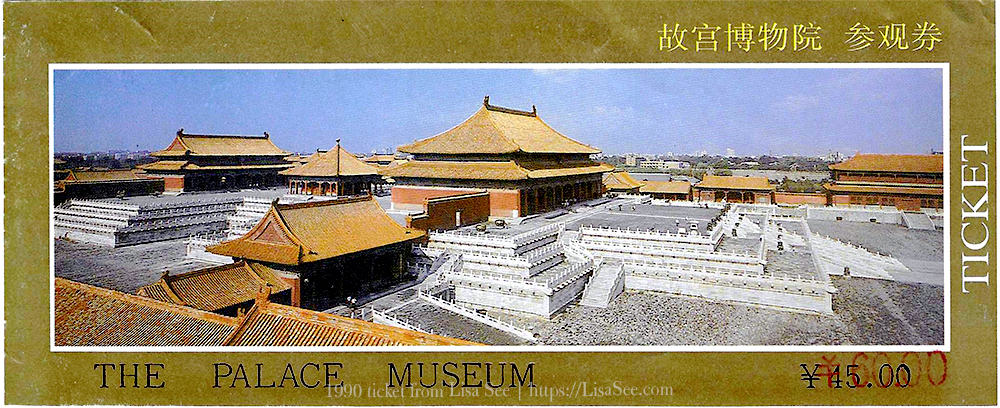Discover Lady Tan’s World
Use the tabs to navigate through the Lady Tan’s World.
Part 1: Lady Tan and Traditional Chinese Medicine
- Tan Yunxian
- Traditional Chinese Medicine
- The Four Examinations
- The Five Depot Organs
- The Five Elements
- Pulse-taking
- Traditional Chinese Medicinal Herbs
- Angelica
- Atractylodis
- Forsythia
- Ginseng
- Honey Locust Fruit
- Licorice Root
- Lovage
- Mugwort
- Poria Mushroom
- Radish Seeds
- Rehmannia
- White Peony Root
- Moxibustion
- Small Pox and Variolation
Part 2: Historical Ming China
- Ming Dynasty
- History of the Ming Dynasty
- Traditional Hanfu
- Makeup and Hair
- Imperial Scholars
- Imperial Exams
- Civil Badges
- Military Badges
Part 3: Traditions and Culture
- Marriage Bed
- Confucius
- Forensics and Punishments
- The Washing Away of Wrongs
- Cangue
- Punishments and Tortures
- Foot Binding
- Concubines and Eunuchs
- Concubines
- Eunuchs
- Weddings
- Wedding Costume and Headdress
- Three Letters
- Six Etiquettes
- Child Bearing
- Midwives
- Childbirth
- Funerals
- Dragon Boat Festival
- Tea
Part 4: People and Places
- Garden of Fragrant Delights
- Humble Administrator’s Garden
- Qiao’s Family Compound
- Places
- Grand Canal
- Sampan
- Wuxi
- Lake Tai
- Forbidden City
- People
- Emperor Hongzhi
- Empress Zhang
Garden of Fragrant Delights
In the book, Lisa transports readers to a captivating world where gardens hold great significance. The “Garden of Fragrant Delights” is inspired by the real-life Huntington Library and Gardens Trail. Just as gardens played a vital role in Ming-era China, they served as spaces of tranquility, beauty, and symbolism. These gardens were meticulously designed, featuring a harmonious blend of natural elements, architecture, and fragrant flora.
The Garden of Fragrant Delights, reminiscent of the Huntington Library and Gardens Trail, captures the essence of Ming Era aesthetics and reflects the era’s appreciation for nature. Ming gardens were meticulously crafted to create a sense of balance and harmony, aligning with the philosophical principles of Taoism and Confucianism prevalent during that time. They were places for contemplation, leisure, and poetic inspiration. In the Ming Dynasty, gardens were seen as microcosms of the natural world, allowing individuals to find solace, connect with their inner selves, and appreciate the beauty of the surrounding landscape.
By drawing inspiration from the Huntington Library and Gardens Trail, Lisa See brings to life the intricate beauty and cultural significance of Ming Era gardens in “Lady Tan’s Circle of Women.” The garden serves as a backdrop for the characters’ stories, reflecting the era’s values, customs, and the profound connection between humanity and nature. Through vivid descriptions and imagery, readers are transported to a time when gardens held profound meaning and offered respite from the complexities of life.
Note: All the photos and the video of the Chinese Garden at Huntington on this page are from Lisa See.
References
Location: Chinese Garden at the Huntington Library and Botanical Gardens, San Marino, CA,
Humble Administrator’s Garden
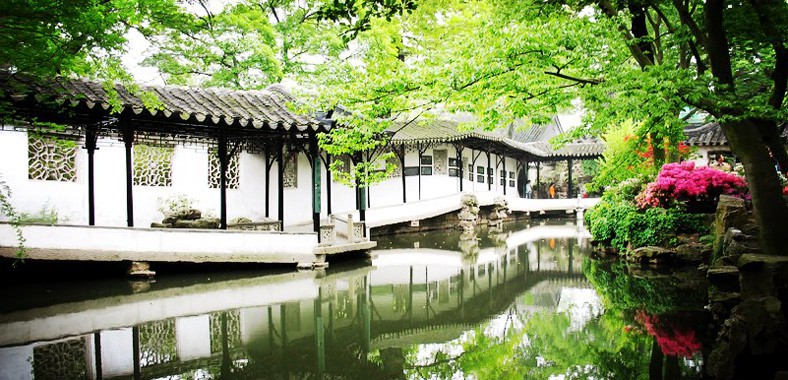
The Humble Administrator’s Garden, known as Zhuozheng Yuan, is a magnificent example of Ming Dynasty garden design. Built during the early 16th century, this renowned classical Chinese garden in Suzhou showcases the artistic and philosophical principles that characterized the Ming era. Spanning over 5 hectares (12 acres), the garden’s layout and features exemplify the harmony between human and nature, a central tenet of Ming Dynasty culture.
The design of the Humble Administrator’s Garden reflects the Ming Dynasty’s emphasis on balance, simplicity, and the integration of natural elements. Its winding paths, pavilions, and bridges lead visitors through a carefully curated landscape of ponds, streams, rock formations, and lush vegetation. This intentional arrangement creates a serene atmosphere that encourages contemplation and a connection with nature, echoing the Ming belief in the importance of finding tranquility and inner harmony.
As visitors wander through the Humble Administrator’s Garden today, they can glimpse the aesthetics and ideals that defined the Ming Dynasty. The garden’s preservation and continued appreciation pay tribute to the Ming’s enduring influence on Chinese art, philosophy, and cultural heritage. It stands as a living testament to the creativity and craftsmanship of the era, inviting visitors to step into the past and experience the timeless beauty of Ming Dynasty garden design.
References
Location: Humble Administrator’s Garden – Archetype of Imperial Gardens
Qiao’s Family Compound

Qiao’s Family Compound, also known as Qiao Family Courtyard, is a historic architectural complex located in the Shanxi province of China. Constructed during the Ming Dynasty, it holds immense significance in showcasing the architectural style, social structure, and cultural heritage of that era. The compound was the residence of the Qiao family, a prominent merchant clan, and stands as a testament to their wealth, power, and status during the Ming Dynasty.
The Qiao’s Family Compound is renowned for its grandeur and intricate design. Spanning over 8,700 square meters, it consists of six main courtyards and 313 rooms, displaying the traditional layout and spatial arrangement typical of Ming-era residential architecture. The compound features beautifully carved wooden structures, stone sculptures, decorative brickwork, and exquisite courtyard gardens, all meticulously crafted to reflect the opulence and sophistication of the Ming Dynasty.
Beyond its architectural splendor, Qiao’s Family Compound holds historical and cultural significance. It offers valuable insights into the social hierarchy and lifestyle of the Ming Dynasty, particularly the prosperous merchant class. The compound served as a symbol of the Qiao family’s social standing and played a central role in their business operations and community activities. It served as a venue for conducting business, hosting important guests, and preserving family traditions, thus encapsulating the social and economic dynamics of Ming-era China.
Today, Qiao’s Family Compound stands as a well-preserved cultural relic, attracting visitors from around the world. It provides a unique glimpse into the wealth, lifestyle, and architectural achievements of the Ming Dynasty. The compound’s historical and architectural significance makes it an important heritage site, showcasing the rich cultural legacy of China’s past and offering a window into the grandeur and splendor of the Ming Dynasty.
References
Location: Qiao’s Family Compound (Qiao Jia Dayuan) – The Most Famous Ancient Dwelling in China.
Places
Grand Canal
The Grand Canal, a monumental engineering feat of ancient China, played a crucial role in the transportation and economic development of the country during the Ming era. Wuxi, a city located in the Jiangsu province, was one of the important cities along the Grand Canal route and served as a bustling hub of commerce and trade. The canal in Wuxi was a vibrant scene, with boats and barges navigating its waters, carrying goods and people between cities.
During the Ming era, the Grand Canal in Wuxi was a bustling waterway, teeming with activity. The canal served as a vital artery for transporting goods, linking northern and southern China. Merchants, traders, and travelers flocked to Wuxi to take advantage of the bustling trade opportunities facilitated by the canal. The city thrived as a center of commerce, with warehouses, markets, and bustling waterfronts lining the canal’s banks.
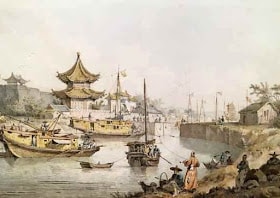
Sampan

Photo taken late September 2002
One of the iconic vessels associated with the Grand Canal and Wuxi is the Sampan, a traditional Chinese wooden boat. Sampans were commonly seen navigating the waters of the canal, carrying both cargo and passengers. These boats were well-suited for navigating the canal’s narrow and winding sections. Sampans were manned by skilled boatmen who skillfully maneuvered their way through the water, transporting goods and people with efficiency. Today, the images of the Grand Canal in Wuxi from the past and present, along with the traditional Sampan boats, provide a captivating glimpse into the historical significance and cultural heritage associated with this majestic waterway.
Wuxi
Wuxi, located in the Jiangsu province of China, has a rich history that dates back to the Ming era. During this time, Wuxi served as a bustling city along the Grand Canal, a vital waterway connecting northern and southern China. The city thrived as a center of commerce, with bustling markets and waterfronts teeming with activity. Wuxi’s strategic location along the Grand Canal played a significant role in its economic development and transportation of goods. Sampans, traditional Chinese wooden boats, were a common sight on the canal, carrying goods and passengers, further contributing to the vibrant atmosphere of Wuxi during that time.
Fast forward to the present day, Wuxi has evolved into a modern city while still retaining its cultural heritage. It has become an important industrial and commercial hub in the Yangtze River Delta region. Despite its modernization, Wuxi has managed to preserve its historical charm, with several cultural landmarks and historical sites still standing. Visitors can explore the ancient canal system, including sections of the Grand Canal, and witness the remnants of Wuxi’s Ming-era past. The city’s scenic beauty, characterized by picturesque landscapes encompassing lakes, gardens, and parks, continues to captivate visitors. The sampans, which were once a common mode of transportation, are still seen navigating the city’s waterways, serving as a cultural symbol of Wuxi.
Today, Wuxi seamlessly blends its Ming-era past with its contemporary vibrancy, offering a fascinating destination for both history enthusiasts and modern-day travelers. The city’s historical significance as a center of trade, its renowned textile industry, and its beautiful gardens all contribute to its unique identity. By honoring its heritage and embracing the opportunities of the present, Wuxi showcases the harmonious coexistence of tradition and progress, making it a captivating destination that reveals the layers of its history to those who explore its streets and waterways.
Lake Tai
Lake Tai, also known as Taihu, is a large freshwater lake located near Wuxi in the Jiangsu province of China. It is one of the country’s largest and most renowned lakes, covering an area of approximately 2,250 square kilometers. Lake Tai holds significant cultural, ecological, and economic importance in the region.
The lake’s natural beauty is a major attraction for tourists and locals alike. Surrounded by picturesque landscapes, Lake Tai offers breathtaking views with its vast expanse of shimmering water, lush greenery, and distant mountains. The serene atmosphere and tranquil ambiance make it a popular destination for relaxation, boating, and enjoying the surrounding nature.
Lake Tai also plays a vital role in the local ecosystem. It supports a diverse range of flora and fauna, including numerous species of fish, birds, and plants. The lake’s wetlands and marshes serve as important habitats for migratory birds, making it a significant location for birdwatching enthusiasts.
The lake’s historical and cultural significance adds another layer of intrigue. It has been an inspiration for artists and poets throughout history, who have immortalized its beauty in their works. Lake Tai is also associated with various legends and stories that reflect the cultural heritage of the region.
In addition to its natural and cultural significance, Lake Tai contributes to the local economy. It supports fishing activities, providing a livelihood for many local communities. The lake’s water resources are used for irrigation, agriculture, and industrial purposes, contributing to the region’s economic development.
Overall, Lake Tai near Wuxi is a captivating destination that combines natural beauty, cultural heritage, and economic importance. It offers visitors a chance to immerse themselves in the tranquility of its waters, appreciate the surrounding landscapes, and explore the historical and ecological treasures that make it a cherished part of the region’s identity.
Forbidden City
The Forbidden City, located in the heart of Beijing, is an architectural marvel that served as the imperial palace during the Ming and Qing dynasties. Constructed between 1406 and 1420 under the orders of Emperor Yongle, it stands as a symbol of China’s imperial power and grandeur. The palace complex spans over 180 acres and consists of nearly 1,000 buildings, making it the largest palace complex in the world.
The Forbidden City was designed with meticulous attention to detail, reflecting the traditional Chinese principles of balance, harmony, and hierarchical structure. It is surrounded by high walls and a moat, creating an imposing and majestic appearance. The complex is organized along a central axis, with the Hall of Supreme Harmony, the largest and most important building, situated at its core. The palace complex features numerous halls, courtyards, ceremonial spaces, gardens, and living quarters, each showcasing exquisite craftsmanship and intricate architectural elements.
For nearly five centuries, the Forbidden City was the political and ceremonial center of imperial China. It was strictly off-limits to the general public and served as the residence of emperors and their households. Today, it stands as a UNESCO World Heritage site and houses the Palace Museum, which showcases an extensive collection of imperial artifacts and treasures. The Forbidden City continues to be a testament to China’s rich history, attracting millions of visitors each year who marvel at its grandeur and immerse themselves in the imperial legacy of the Ming and Qing dynasties.
References
Article: Allnut, Roger. “Via China’s Grand Canal, Navigating Wuxi’s Historical Sights.” Travel Weekly. 13 October 2010.
Article: Quan, Chris. “Forbidden City: Highlights, Secret of the Name, Facts.” China Highlights. 4 November 2022.
Photo: Sampan on the Yangtze River (Chang Jiang). Wikimedia. September 2002.
Website: Grand Canal. Epic World History: Expanding the World into First Global Age. July 2013.
Website: Tai-Hu (Lake Tai). World Lake Database.
Wikipedia: William Alexander. (https://en.wikipedia.org/wiki/William_Alexander_(painter))
YouTube: The Grand Canal – UNESCO World Heritage Site. Channel: World Heritage Journey. 12 December 2019.
YouTube: The Venice of China – the Wuxi Section Ancient Grand Canal – Beijing Hangzhou Grand Canal. Channel: CandorBlog. 25 November 2018.
YouTube: Grand Canal on Wuxi. Channel: TravelChinaGuide. 23 May 2012.
People
Emperor Hongzhi
Emperor Hongzhi, born Zhu Youtang, was the seventh emperor of the Ming dynasty in China, reigning from 1487 to 1505. He ascended to the throne at the age of 16 and ruled with a focus on governance and promoting the welfare of his people. Emperor Hongzhi is often regarded as one of the more capable and benevolent emperors of the Ming dynasty.
During his reign, Emperor Hongzhi implemented a series of reforms aimed at improving the livelihoods of his subjects. He advocated for fiscal responsibility and reduced government expenditure, easing the burden on the common people. He encouraged agricultural development, promoting techniques to increase crop yields and ensure food security. Under his rule, there were efforts to distribute relief during times of natural disasters and provide assistance to the poor.
Emperor Hongzhi also emphasized education and cultural advancement. He established schools and encouraged the study of Confucianism, placing importance on moral values and scholarly pursuits. He promoted the compilation and publication of important historical texts and supported the examination system, which played a significant role in selecting officials based on their knowledge and competence.
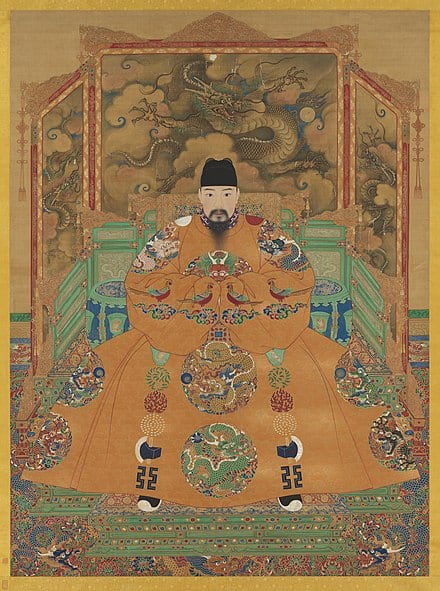
Despite his relatively short reign, Emperor Hongzhi’s policies and efforts left a positive impact on the Ming dynasty. His emphasis on good governance, fiscal responsibility, and social welfare endeared him to his subjects. Emperor Hongzhi’s reign is often seen as a period of stability and prosperity, marked by a focus on the well-being of the people and the advancement of cultural and educational endeavors.
Empress Zhang
Empress Zhang, also known as Empress Zhang (née Hu) or Empress Dowager Zhang, was the primary consort of Emperor Hongzhi during the Ming dynasty in ancient China. She played a significant role in the imperial court and left a lasting impact on the era.
Empress Zhang was known for her intelligence, wisdom, and strong sense of duty. She was deeply involved in state affairs and was highly respected for her political acumen. Empress Zhang’s influence extended beyond the palace, as she actively participated in decision-making processes and provided counsel to the emperor. Her opinions were highly regarded and often taken into consideration when important matters were discussed.
Empress Zhang was also recognized for her benevolence and compassion. She was dedicated to helping the less fortunate and actively engaged in charitable activities, such as providing assistance to the poor and supporting the education of talented individuals. Her kindness and generosity endeared her to the people, and she became known as a virtuous and beloved empress.

Furthermore, Empress Zhang was a patron of the arts and promoted cultural development during the Hongzhi era. She supported the creation of literature, poetry, and artwork, fostering an environment of creativity and intellectual growth within the imperial court. Empress Zhang’s patronage contributed to the flourishing of literature and arts, leaving a cultural legacy that influenced subsequent generations.
Empress Zhang’s reign as Empress Consort and later as Empress Dowager marked a period of stability and prosperity during the Ming dynasty. Her presence and contributions to governance helped maintain harmony and ensured the smooth running of the empire. Empress Zhang’s dedication to her role as a wise and compassionate leader earned her respect and admiration throughout the dynasty and beyond.
References
Image: Portrait assis de l’empereur Hongzhi. Wikimedia Commons.
Image: Empress Zhang (中文(中国大陆):作者已经去世超过200年,作品已经进入公有领域). Wikimedia Commons.
Wikipedia: Emperor Hongzhi. (https://en.wikipedia.org/wiki/Hongzhi_Emperor)
Wikipedia: Empress Zhang (Hongzhi). (https://en.wikipedia.org/wiki/Empress_Zhang_(Hongzhi))
YouTube: Empress Zhang – The Hongzhi Emperor’s Only Wife. Channel: The Royal Women. 30 July 2022.

